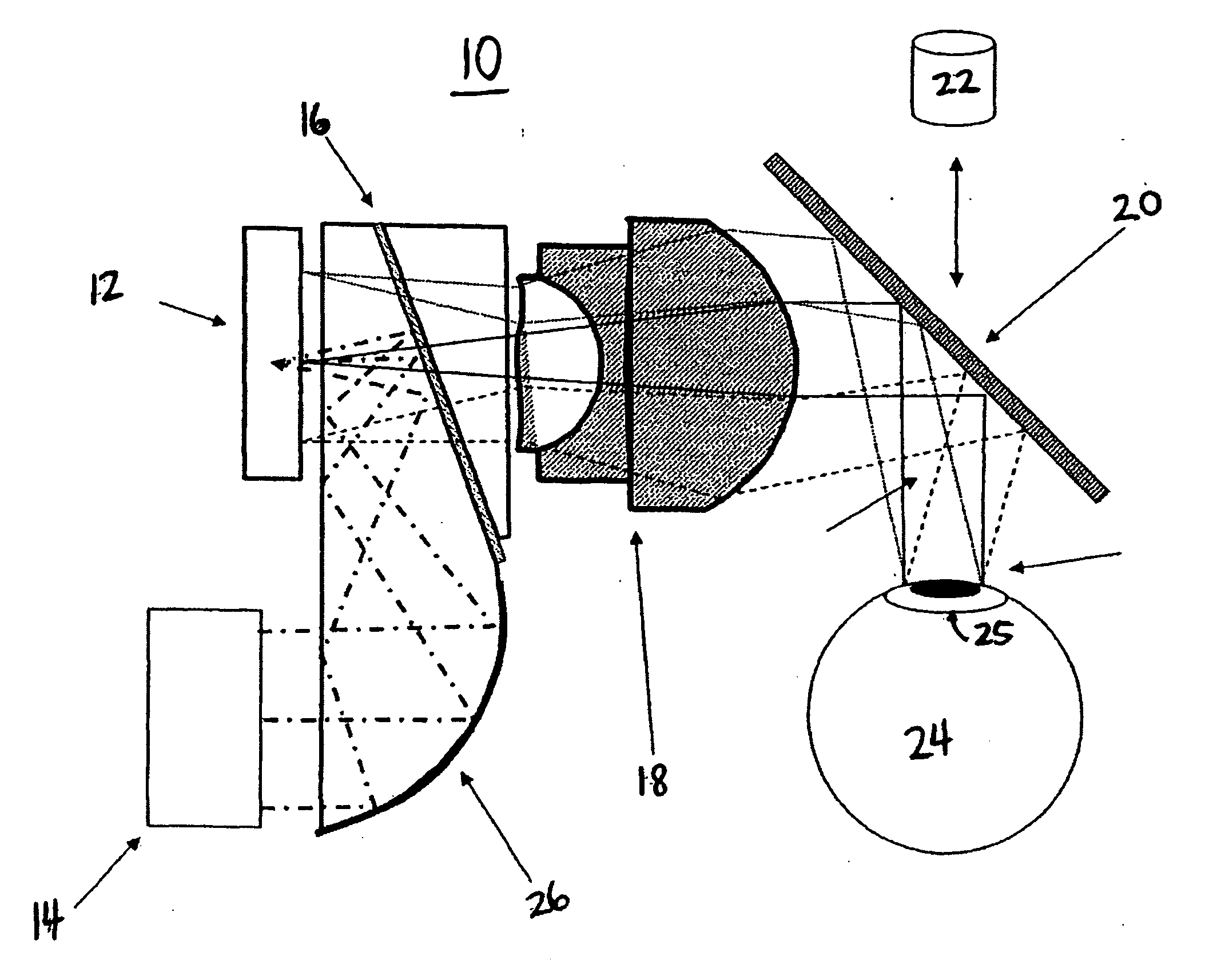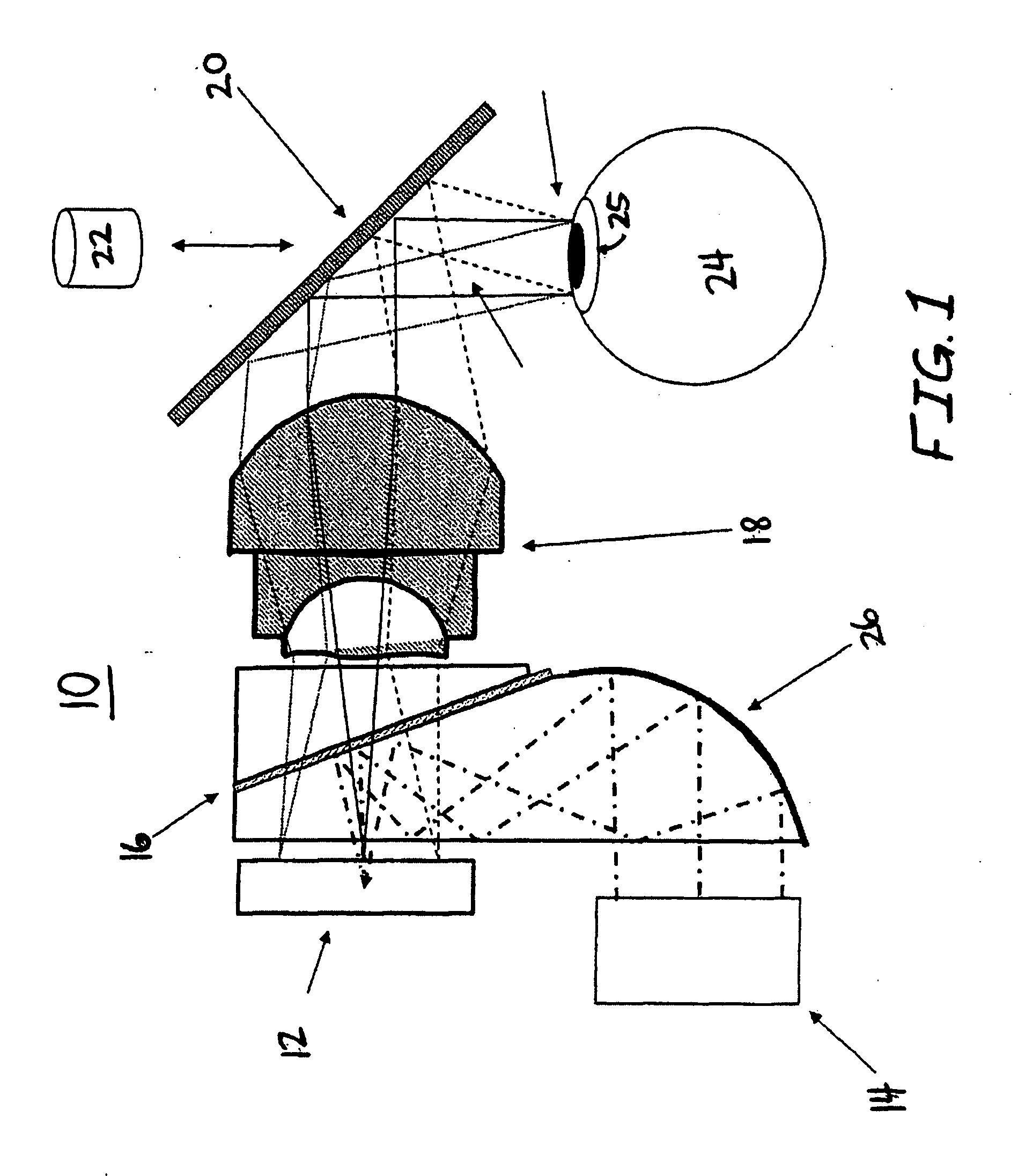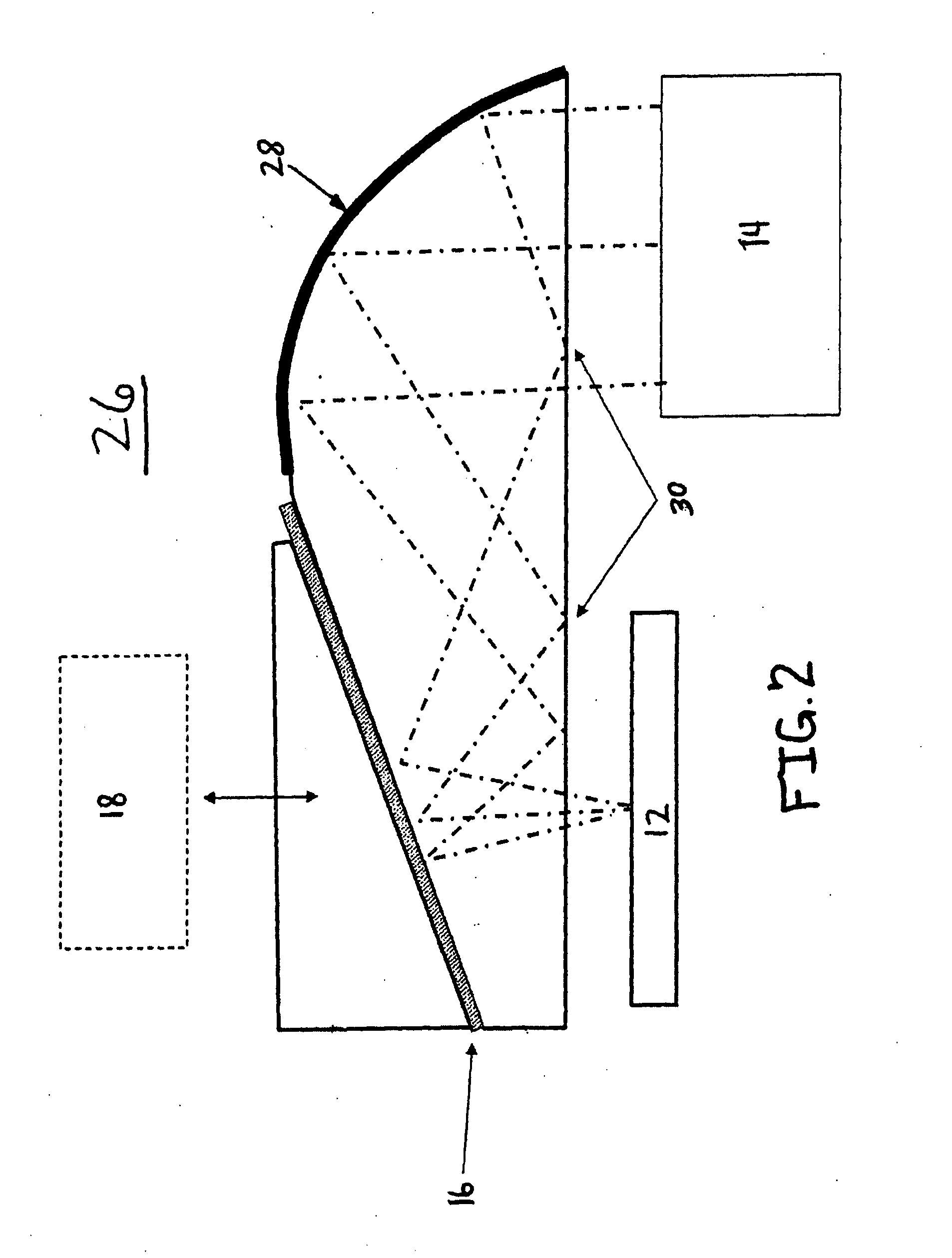Method of combining images in a wearable display system
a display system and image technology, applied in the field of wearable display systems, can solve the problems of limited by the very basic physics of reflection and transmission, power hungry, and the impracticality of metalized combiners for many demanding applications, and achieve the effect of brighter images and large field of view
- Summary
- Abstract
- Description
- Claims
- Application Information
AI Technical Summary
Benefits of technology
Problems solved by technology
Method used
Image
Examples
Embodiment Construction
[0020] Referring now to the drawing figures, wherein like elements are denoted by like reference numbers, there is illustrated in FIG. 1 an embodiment of a wearable display system, such as a Head Mounted Display (HMD) 10, which combines a synthetic image with a contemporaneously viewable “real image” of the outside world. As shown, the HMD 10 can comprise a display engine 12 which produces linearly polarized light defining the synthetic image, a light engine 14 which produces light (typically unpolarized) to illuminate the display engine 12, a polarizing beamsplitter 16 in the path of the light produced by the light engine 14 which polarizes at least a portion of the light from the light engine 14 and reflects the polarized portion of light onto the display engine 12 (enabling the display engine 12 to produce the linearly polarized light defining the synthetic image), display optics 18 in the path of the linearly polarized light defining the synthetic image, and a wire grid polarizi...
PUM
 Login to View More
Login to View More Abstract
Description
Claims
Application Information
 Login to View More
Login to View More - R&D
- Intellectual Property
- Life Sciences
- Materials
- Tech Scout
- Unparalleled Data Quality
- Higher Quality Content
- 60% Fewer Hallucinations
Browse by: Latest US Patents, China's latest patents, Technical Efficacy Thesaurus, Application Domain, Technology Topic, Popular Technical Reports.
© 2025 PatSnap. All rights reserved.Legal|Privacy policy|Modern Slavery Act Transparency Statement|Sitemap|About US| Contact US: help@patsnap.com



